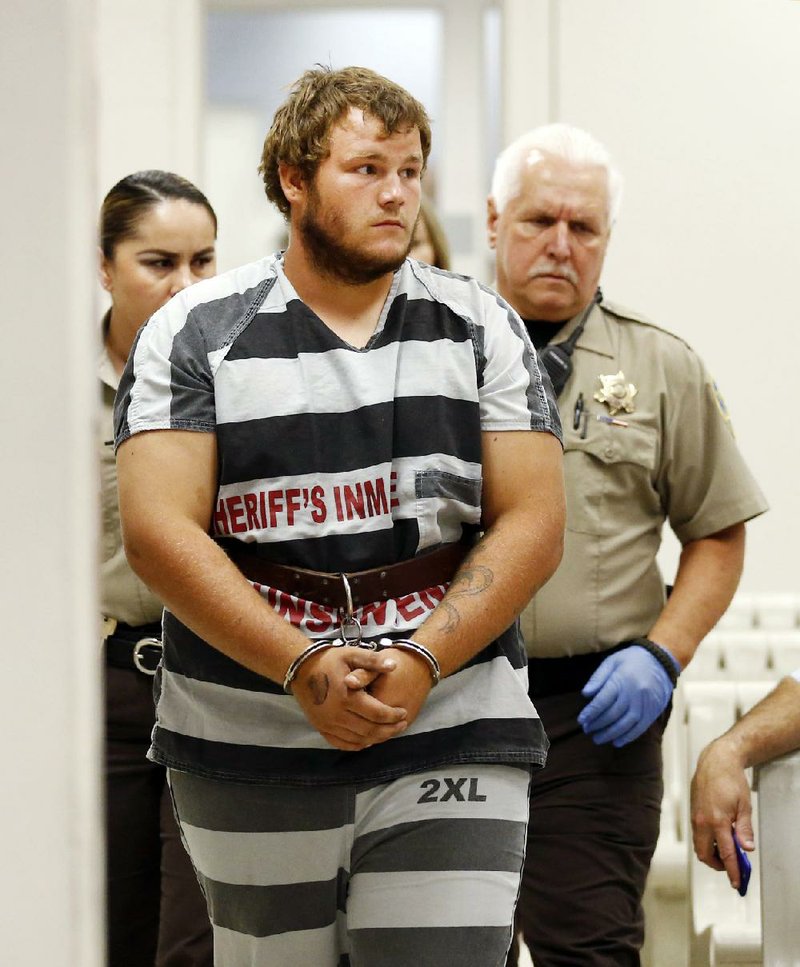PHOENIX -- Seven months after the arrest of Leslie Merritt Jr. in a series of freeway shootings that rattled Phoenix, the case against him fell apart, leading to his release, the dismissal of charges and allegations of a botched investigation.
After his arrest, Merritt's interrogation went on for more than two hours, culminating with the detective telling him two things: Ballistics experts had matched his handgun to four of the 11 shootings, and they had him on video pulling the trigger. The latter statement was a lie. The former would eventually be the undoing of it all.
Police believe the shootings began Aug. 27 and continued until Sept. 10. Investigators determined that eight of the shootings were bullet strikes while the remaining three were some other projectiles. They also believed that while they had a serial shooter on the loose, some of the crimes were likely copycats.
No one was seriously injured.
Charter bus driver Robert McDonald first thought he hit something while on Interstate 10 on Aug. 29. But when McDonald stopped his empty bus, he was shocked to see what appeared to be a bullet hole. Police arrived 20 minutes later.
"It hadn't really hit me that somebody took a shot at me," said McDonald, who said he still has trouble sleeping.
Before Merritt's capture, authorities faced mounting pressure to solve the case. They flooded the highways with patrol cars. They monitored freeway cameras. And signs posted over roadways offered drivers a tip line to call in suspicious activity.
Then came a break in the case. It was the morning of Sept. 11, a day after the last shooting. Police had a lead. They swooped in with guns drawn and arrested a 19-year-old man they called a person of interest.
"It was good police work," Arizona Department of Public Safety spokesman Bart Graves said at the time.
The man was released a week later. No connection. The investigation continued with a renewed sense of urgency.
Experts examined bullets retrieved from the crime scenes until they say they determined the exact type of weapon used in the shootings. Detectives fanned out to pawnshops, hoping for a lucky break, retrieving every one of those guns and running tests until the department's crime laboratory found a match. It was Sept. 17. The firearm was traced back to Merritt.
He was arrested a day later.
"I was convinced that Leslie Merritt was the guy," McDonald said. "I was, like everybody else, sure. Ballistics doesn't lie."
That would soon be put to the test as the gun became the linchpin of the case.
Merritt was charged only with the first four shootings. The rest remain unsolved. But the tip line signs came down.
As the case weaved through the courts, Merritt languished in jail in lieu of $1 million bond, unable to come up with the money to pay for that or for expensive attorneys. He pleaded innocent to numerous charges, including drive-by shootings and aggravated assault.
That's when two high-profile lawyers said they saw flaws in the case and stepped in to represent Merritt.
As prosecutors prepared for trial, they had their own forensics expert retest the bullets against Merritt's gun. The results were damning -- but not in the way authorities hoped.
The expert found that the crime lab came to a faulty conclusion, noting the bullets "could neither be excluded nor identified" as having come from Merritt's gun.
Merritt's attorneys began to dig deeper. Based on measurements of the heights of vehicles that were struck and the height of Merritt's car, along with examining the trajectory of the bullets, they say it is fantasy that their client fired the shots.
"The only way Leslie Merritt could have perpetrated this shooting on I-10 ... is if he was driving down the freeway in broad daylight standing on the roof shooting downward. Impossible," defense attorney Jason Lamm said of one of the shootings.
Prosecutors also enlisted the FBI to use Merritt's cellphone to track his movements on the days of the shootings. Defense lawyers say that was strike three, indicating that he was nowhere near the crime scenes.
The case went back to court, and based on the evidence now being presented, the judge reduced Merritt's bail to zero, allowing for his release pending trial. Soon, prosecutors themselves sought a dismissal of charges without prejudice, meaning they can arrest Merritt again.
"I'm not guaranteeing that we're going to refile charges in this case. I'm also not guaranteeing that charges would not be refiled in this case," top prosecutor Bill Montgomery said recently.
Department of Public Safety Director Frank Milstead said Friday that he stands behind his crime lab's findings.
"I believe we have enough evidence to develop probable cause to believe that he is the correct suspect," Milstead said.
Defense attorneys remain on the attack, noting that Merritt is still considered the only suspect, and he has not been vindicated.
"There was a public thirst for blood," Lamm said, "a public thirst for accountability, and that thirst was quenched by the arrest of Leslie Merritt Jr."
A Section on 05/02/2016
